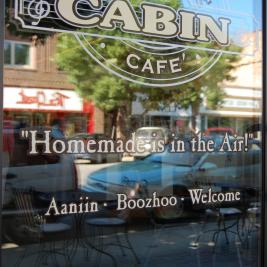Residential school film plays Bay Street Film FestivalA film about a young girl’s final four days at home before going off to residential school aired Oct. 2 at the Bay Street Film Festival.By Rick GarrickWhen Kroll first saw the children’s book Shi Shi Etko, which was written by Nicola Campbell, she realized she wanted to film the story.
“I came across the book by Nicola Campbell and could just visualize it in my head,” Kroll said, explaining she shot the film entirely in the Halq’eméylem language of the Sto:lo First Nation. “We got language coaches in, the actors were really dedicated.”
Kroll said the actor who played the Elder remembers being yelled at for speaking her own language while at residential school; only a few of the Elders now speak their language in the Chilliwack area of B.C., where the film was shot about a year ago.
“Only a handful of Elders speak the language anymore,” Kroll said. “I got to know about the language and the traditions of the people of that area. We wanted to keep the film as traditional as possible.”Comment: I haven't read the book or seen the movie, but it sounds like a good way to present the boarding-school story. Don't show the horrors of the boarding schools explicitly, because that only comes across as preachy. Imply the horrors by showing what the child is about to lose: her deeply-rooted culture and language.
For more on the subject, see
Shi-Shi-Etko Trailer and
Sto:lo Film of Children's Book.
Below: "Kate Kroll, director of
Shi Shi Etko, screened her film at the Bay Street Film Festival in Thunder Bay." (Rick Garrick--Wawatay News)




























